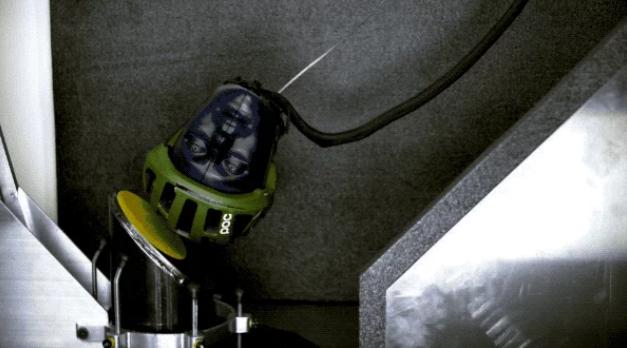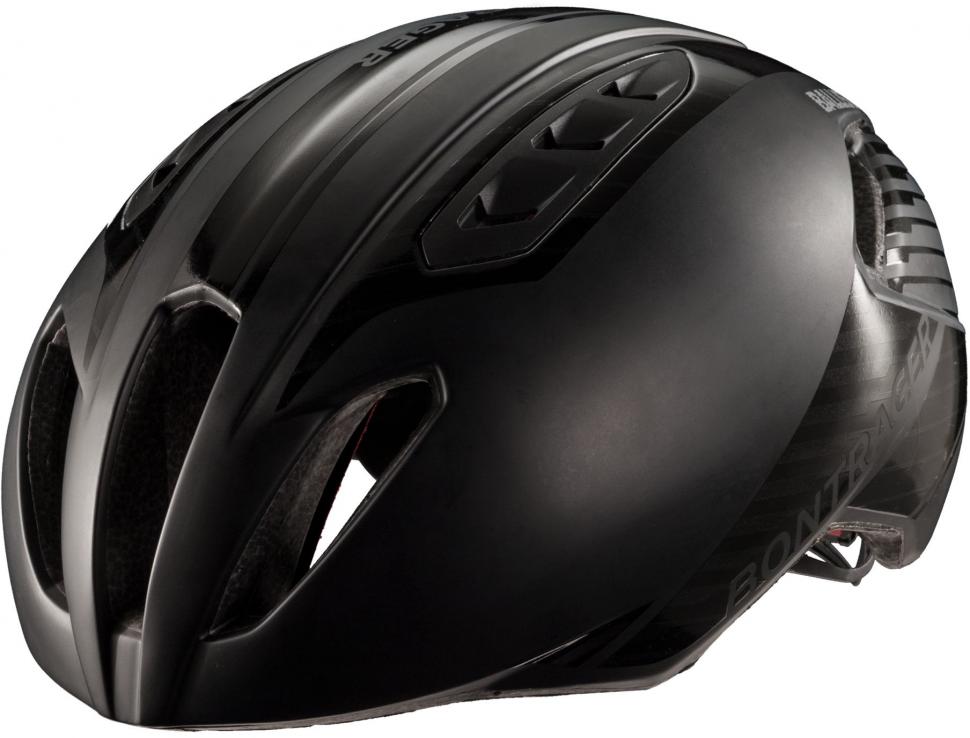- News
- Reviews
- Bikes
- Accessories
- Accessories - misc
- Computer mounts
- Bags
- Bar ends
- Bike bags & cases
- Bottle cages
- Bottles
- Cameras
- Car racks
- Child seats
- Computers
- Glasses
- GPS units
- Helmets
- Lights - front
- Lights - rear
- Lights - sets
- Locks
- Mirrors
- Mudguards
- Racks
- Pumps & CO2 inflators
- Puncture kits
- Reflectives
- Smart watches
- Stands and racks
- Trailers
- Clothing
- Components
- Bar tape & grips
- Bottom brackets
- Brake & gear cables
- Brake & STI levers
- Brake pads & spares
- Brakes
- Cassettes & freewheels
- Chains
- Chainsets & chainrings
- Derailleurs - front
- Derailleurs - rear
- Forks
- Gear levers & shifters
- Groupsets
- Handlebars & extensions
- Headsets
- Hubs
- Inner tubes
- Pedals
- Quick releases & skewers
- Saddles
- Seatposts
- Stems
- Wheels
- Tyres
- Health, fitness and nutrition
- Tools and workshop
- Miscellaneous
- Buyers Guides
- Features
- Forum
- Recommends
- Podcast
TECH NEWS
 helmet impact test
helmet impact testHow safe is your helmet? New study rates them, Bontrager Ballista MIPS comes out on top
How safe is this helmet? That’s probably the question most of you ask when buying a new helmet, beyond such factors as weight, ventilation, fit adjustment and style.
Now new research by Virginia Tech in the US sheds some interesting light on how helmets perform in a crash test.
- Cycling helmets — everything you need to know
It tested 30 adult sized helmets using an impact simulator designed to recreate the most common head-impact scenarios on the road, dropping helmets onto an angled anvil in six different locations and at two impact speeds. Sensors measured the acceleration and rotational velocity so it was able to predict the head injury risk.
The helmets were then ranked, from five stars for the best ability to reduced head and neck injury, down to two stars, the lowest ranking in this test.
And the results of the test show the Bontrager Ballista MIPs tops the list with five stars, followed by the Louis Garneau Raid MIPS, Bell Stratus MIPS and Specialized Chamonix MIPS also on five stars.
All scoring four stars were the Specialized Prevail II, Smith Optics Overtake, POC Octal, Giro Synthe and Scott Arx Plus MIPS.
Lower down the list there’s a cluster of urban helmets such as the Giro Sutton MIPS, Bern Brentwood, Kali City, Bontrager Electra and Nutcase Street.
Not fairing so well is the Bern Watts, bottom of the list with two stars. The Lazer Genesis doesn’t score much better.
You can view the full list here
Are you surprised by the results? An expensive helmet topping the list might be expected, but the much cheaper Specialized Chamonix helmet performing nearly as well is very interesting and indicates that a higher price tag doesn’t always result in a safer helmet.
Through the testing of 30 helmets the Virginia Tech researchers noticed trends. It says that road-style helmets performance better than rounded urban helmets, which is why the likes of the Ballista is at the top and the Bern urban helmet is towards the bottom.
It also reckons MIPS improves helmet performance in these tests. MIPS stands for Multi-Directional Impact Protection System. A MIPS helmet is claimed to offer additional protection against rotational forces in a crash, by allowing two layers of the helmet to move independently. It's increasingly common in top-end helmets.
- 8 of the best cheap cycling helmets — decent lids that don't cost a fortune
The organisation has spent the last few years testing various sporting equipment for safety, from football to hockey helmets. For this cycle helmet test it was supported by the Insurance Institute for Highway Safety, who lent expertise in analysing common crashes, as well as providing financial support.
It’s the first such comparative test that we can recall seeing here at road.cc that attempts to rate helmets by the level of protection they offer. Helmets have to be tested before they go on sale, but's very much a pass or fail thing, there's no indication whether a £200 helmet is better in a crash than a £20 helmet, or how two £100 helmets compare to each other for example.
In the European Union, helmets must meet the EN 1078 standard, which calls for a deceleration of no more than 250g to be transmitted to the head in an impact at 5.42-5.52 m/s (a little over 12 mph). The standard involves impacts on a flat surface and a kerbstone.
In the US a Consumer Product Safety Commission (CPSC) standard applies. The two are roughly equivalent in terms of impact absorption.
- When should I replace my bike helmet?
“But which helmets are most effective? Until now, there hasn’t been a systematic way for consumers to know. Every bike helmet on the market is required to meet a standard related to the impact threshold for exceptionally severe head injuries, like skull fractures.
But that standard is pass-fail, and didn’t help cyclists discriminate between hundreds of passing helmets; it also didn’t assess helmet performance during less-severe impacts, which are far more common and can still result in concussions and other injuries,” explains Virginia Tech.
“In cycling, we saw an opportunity to reach a broad cross-section of the public and bring a new level of safety to an activity with a wide range of other benefits. We also hope manufacturers will use the information to make improvements,” said Steve Rowson, an associate professor of biomedical engineering and mechanics in the College of Engineering and the helmet lab’s director.
It’s interesting research and sheds clear light on how helmet tests are lacking. I'd like to see a Euro NCAP-style test for helmets with much more transparency about the results so the consumer can make a much more informed choice.
The research team says it’s planning to test more helmets so we'll keep an eye out for those results.
Will these findings influence your next helmet purchasing decision?
David worked on the road.cc tech team from 2012-2020. Previously he was editor of Bikemagic.com and before that staff writer at RCUK. He's a seasoned cyclist of all disciplines, from road to mountain biking, touring to cyclo-cross, he only wishes he had time to ride them all. He's mildly competitive, though he'll never admit it, and is a frequent road racer but is too lazy to do really well. He currently resides in the Cotswolds, and you can now find him over on his own YouTube channel David Arthur - Just Ride Bikes.
Latest Comments
- Barraob1 6 min 32 sec ago
It was cheaper and better when the IVCA ran it. Elite events don't give a shit about riders
- David9694 12 min 12 sec ago
Elderly man sentenced following serious crash in Ringwood...
- Slartibartfast 2 hours 7 min ago
What I find most amazing is that they didn't use this an opportunity to encourage drivers to check their vision and get an eye test. I was waiting...
- slc 2 hours 49 min ago
The Cugel I knew typically prevailed on others to prepare food. But I was always curious about the porridge of drist and raisins enjoyed on the...
- kingleo 3 hours 48 min ago
Cyclists have been riding in Bister for about 150 years, and now all of a sudden they are a great danger to pedestrians.
- the little onion 4 hours 15 min ago
I didn't remove the sound because I didn't think that it mattered - quite clearly the swearing was in reaction to an act of frankly horrid...
- Nigel_2003 5 hours 2 min ago
Know how the limiter screws on your derailleur work and use the right ones to keep chain on a manageable cog at the back and/or chainring at the...
- Freddy56 5 hours 25 min ago
Story one: "Here is all the deals at 50% off."...
- andystow 5 hours 38 min ago
Front wheel trued and tensioned last night. I think it took me well over an hour.

Add new comment
93 comments
Strap yourself in lads!
I'm awaiting the BTBS counter study in which he bounced his head off a concrete floor 100 times in succession and still posted in a coherent manner.
I assume that's his usual routine before posting anything tbh...
I look forward to YW making a factual, reasoned, logical post, but judging from experience, I'll be waiting a long time.
Pages